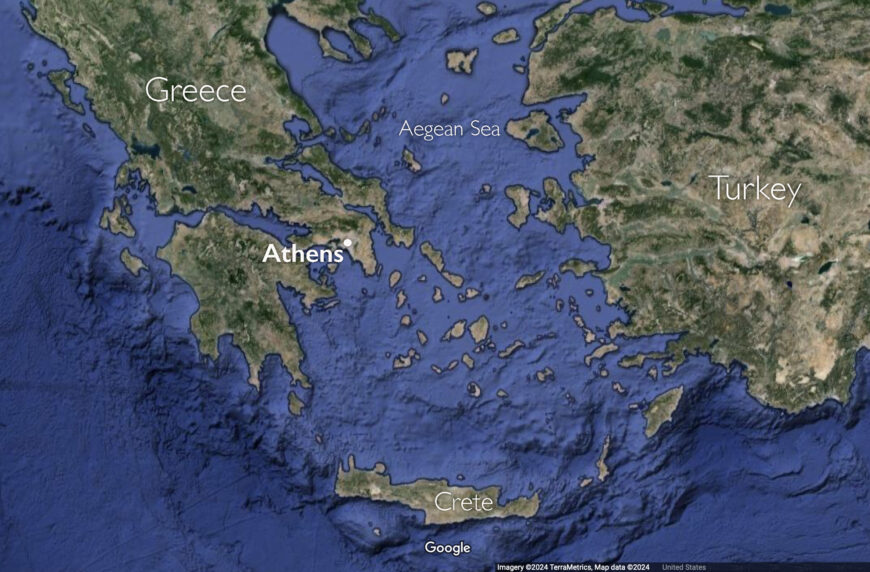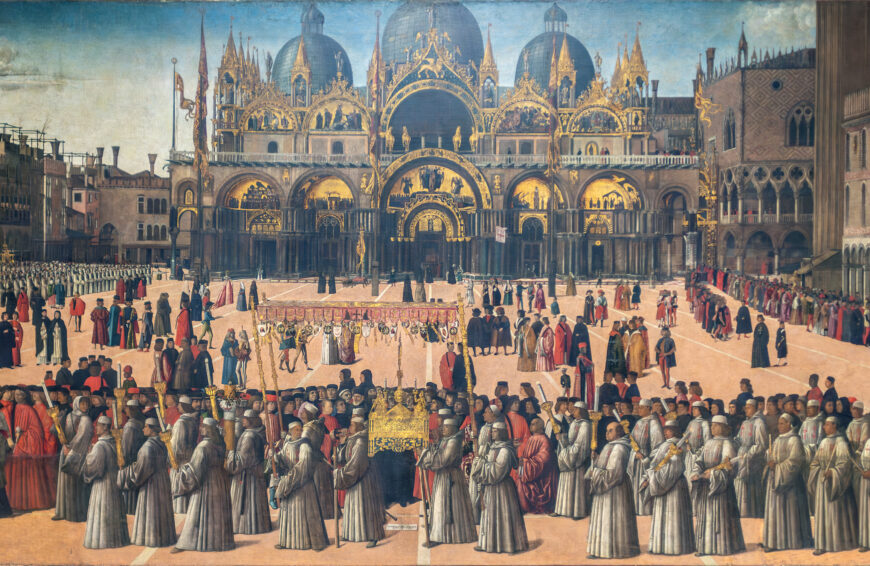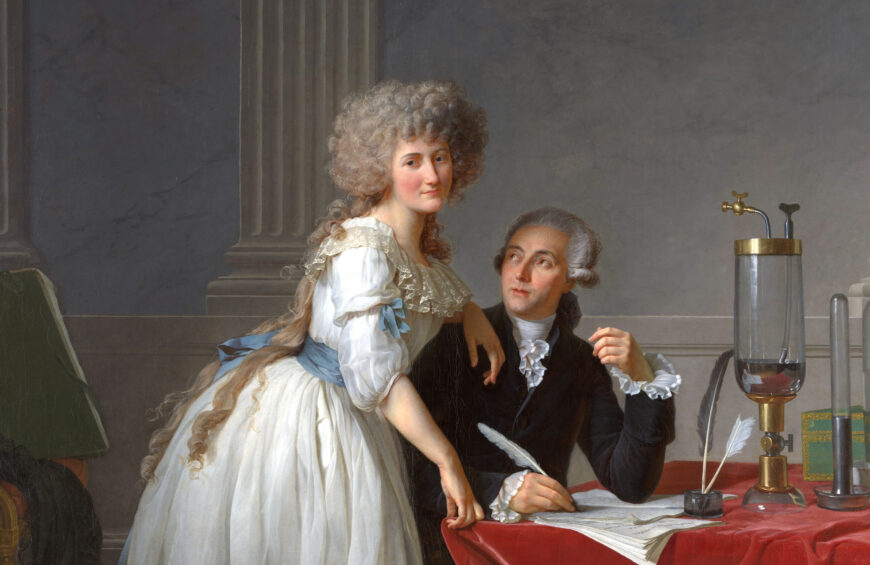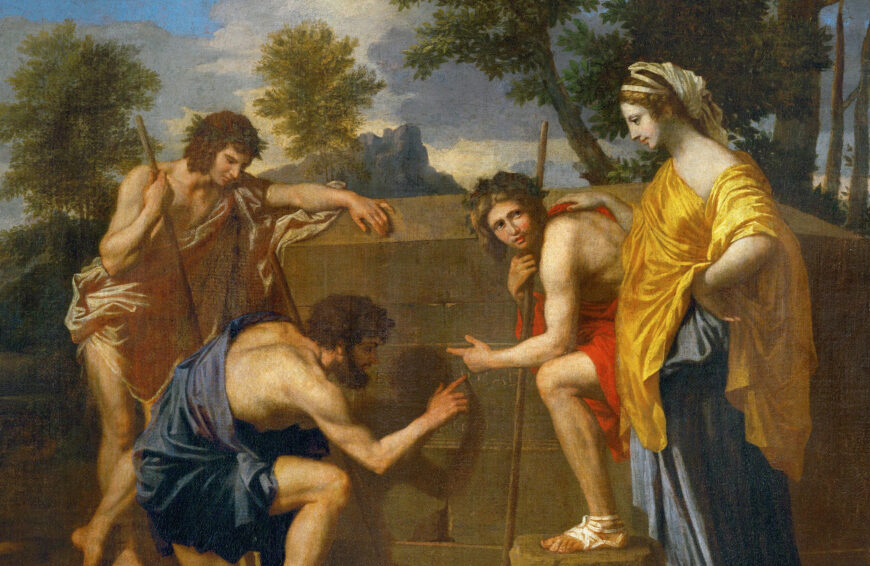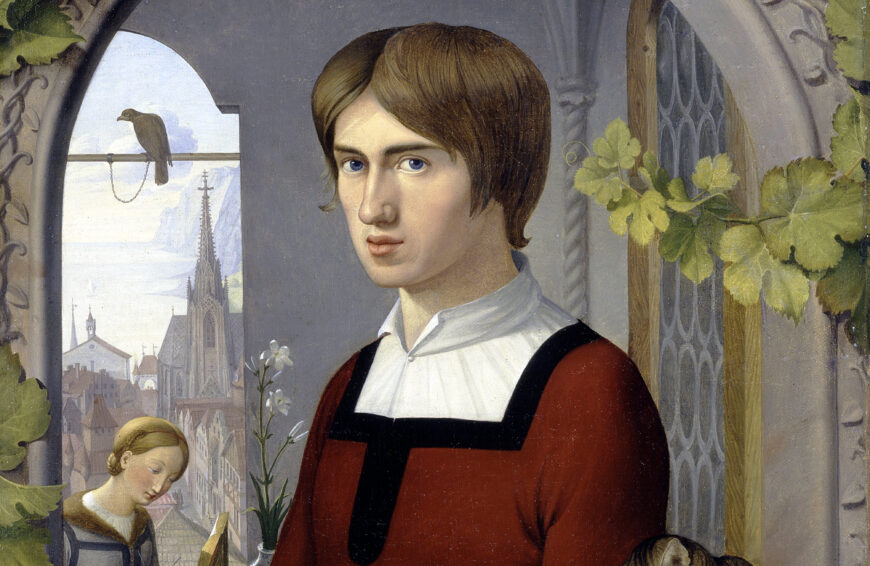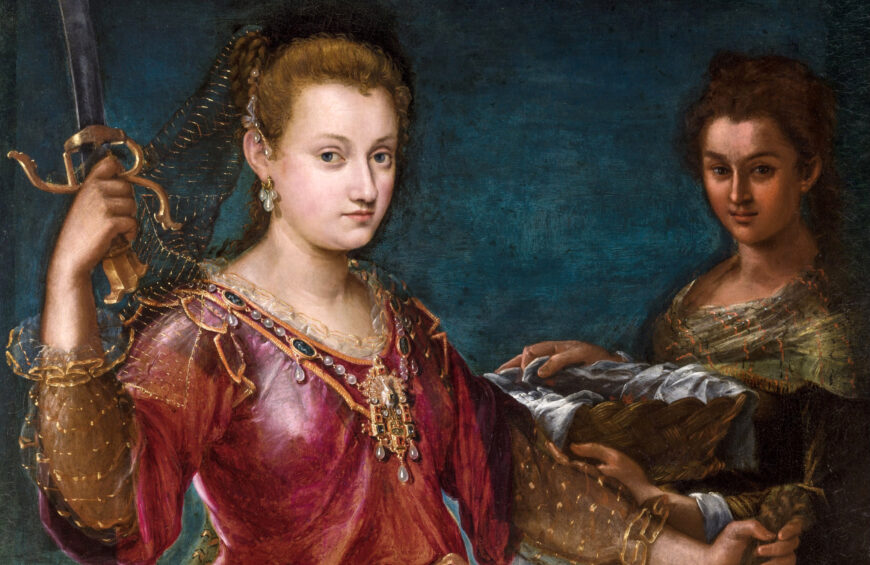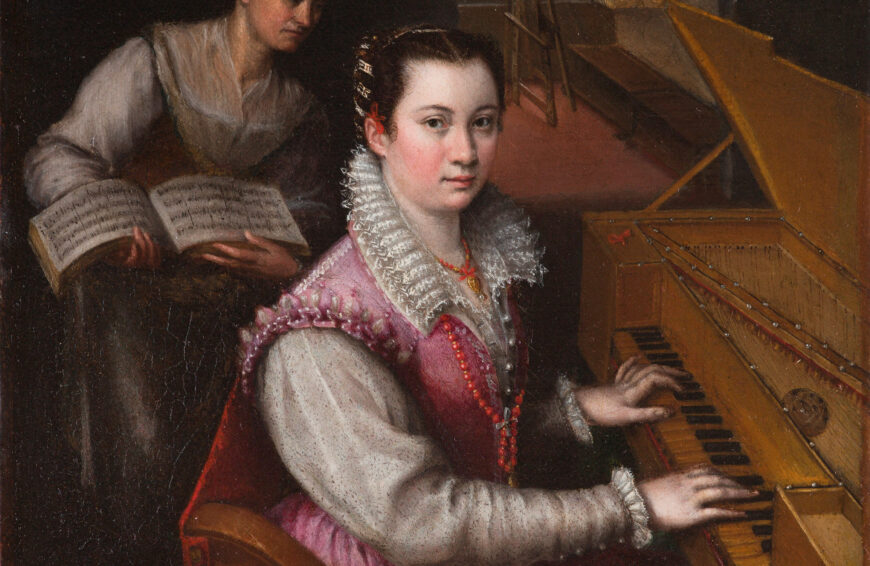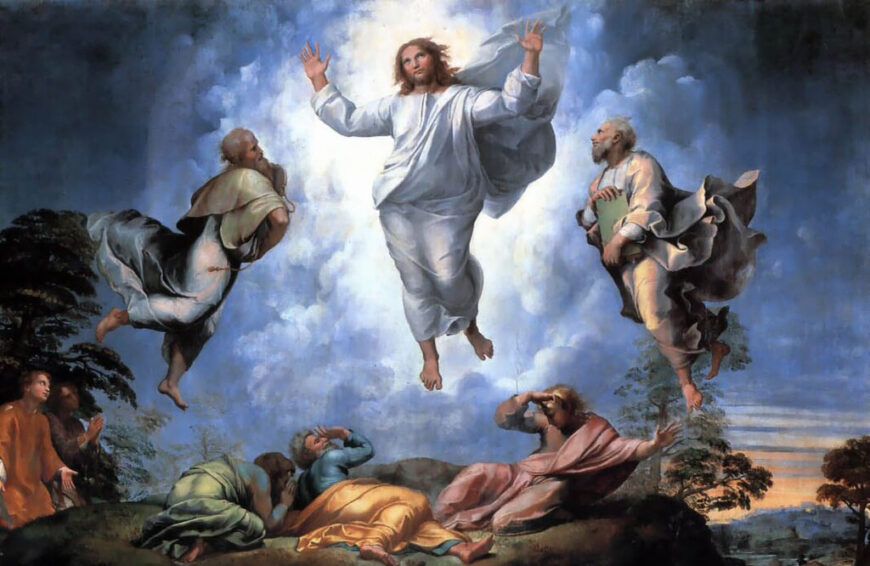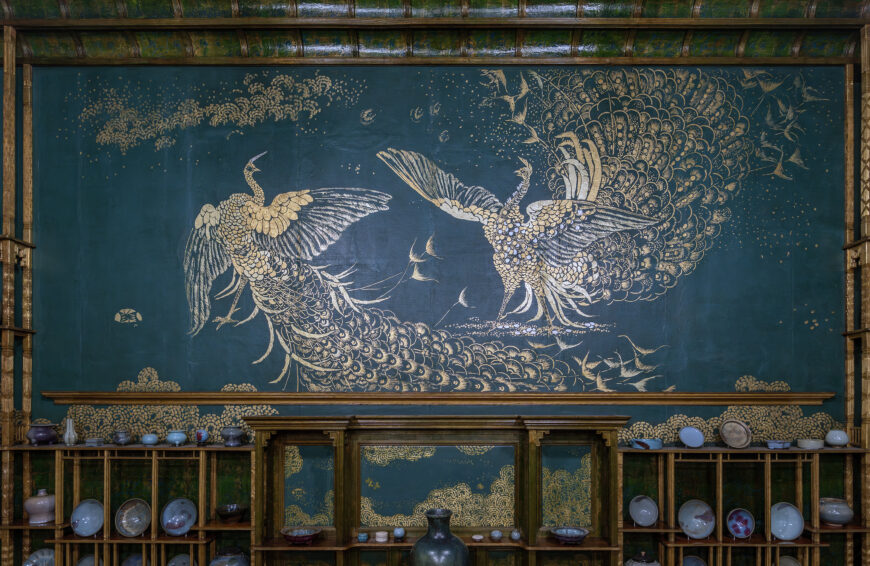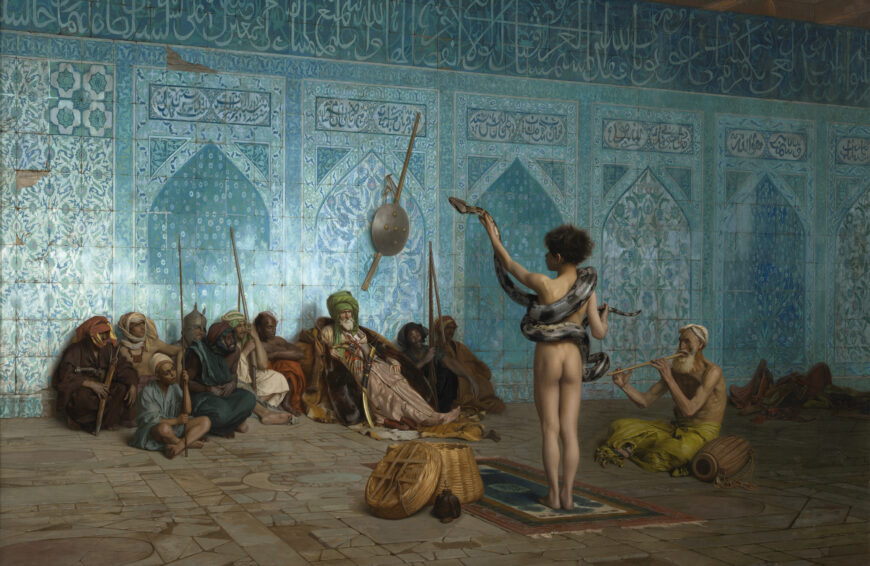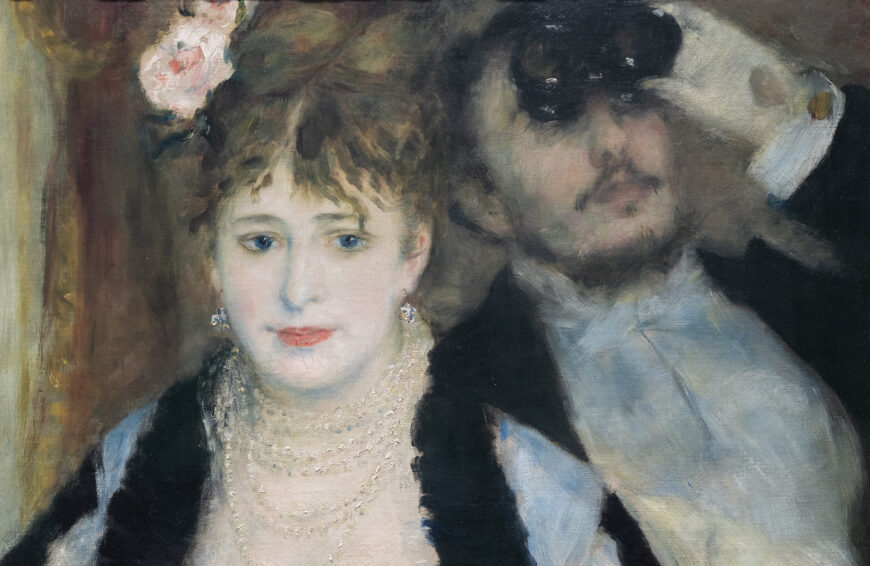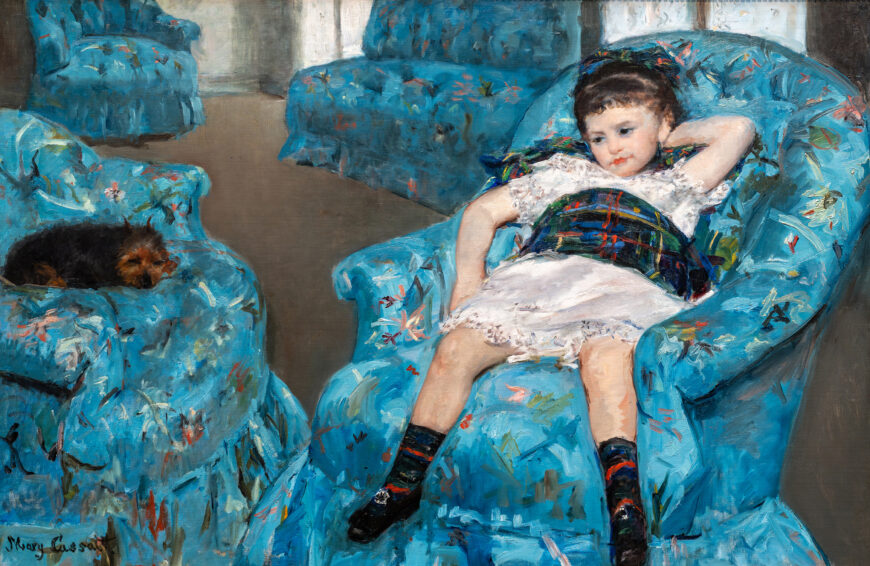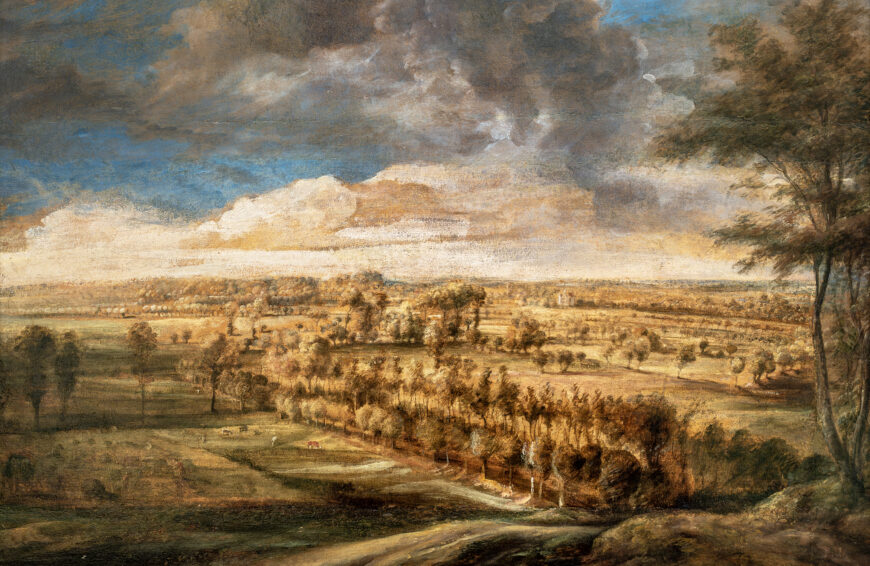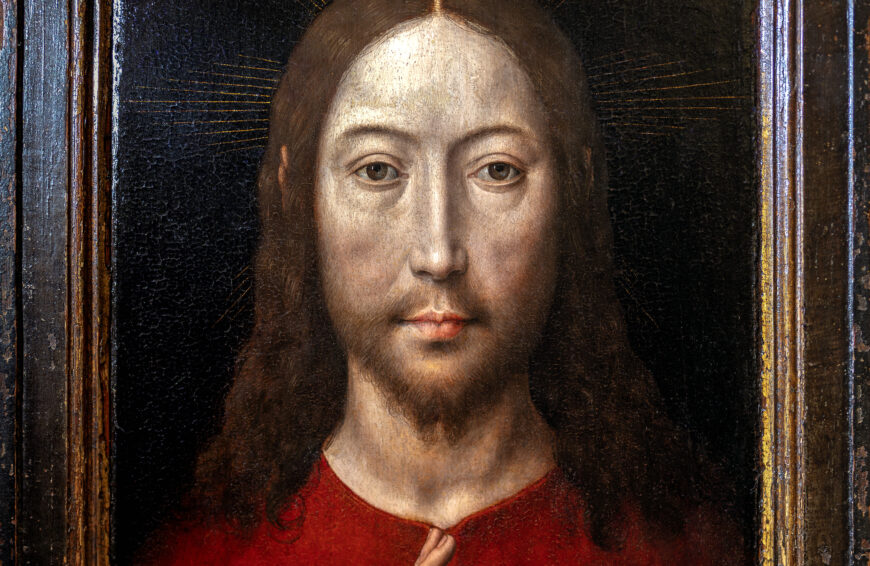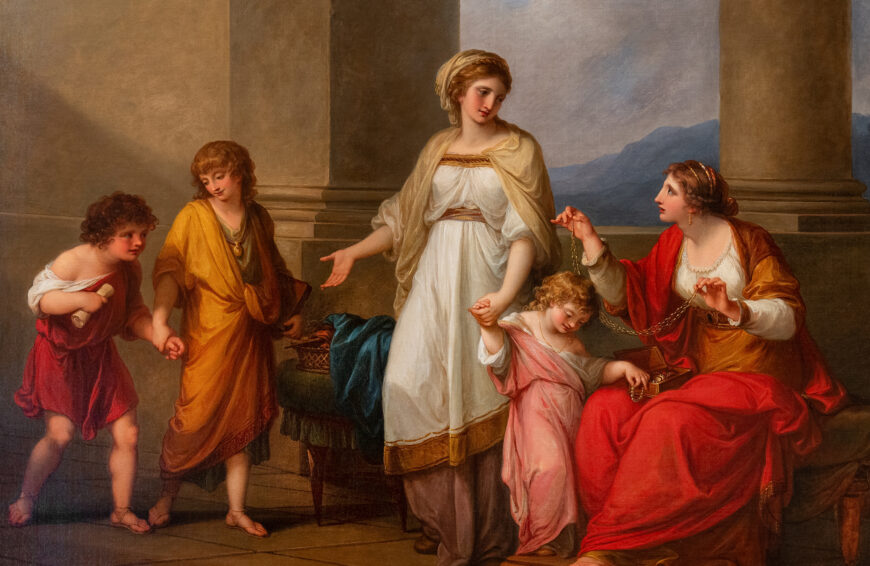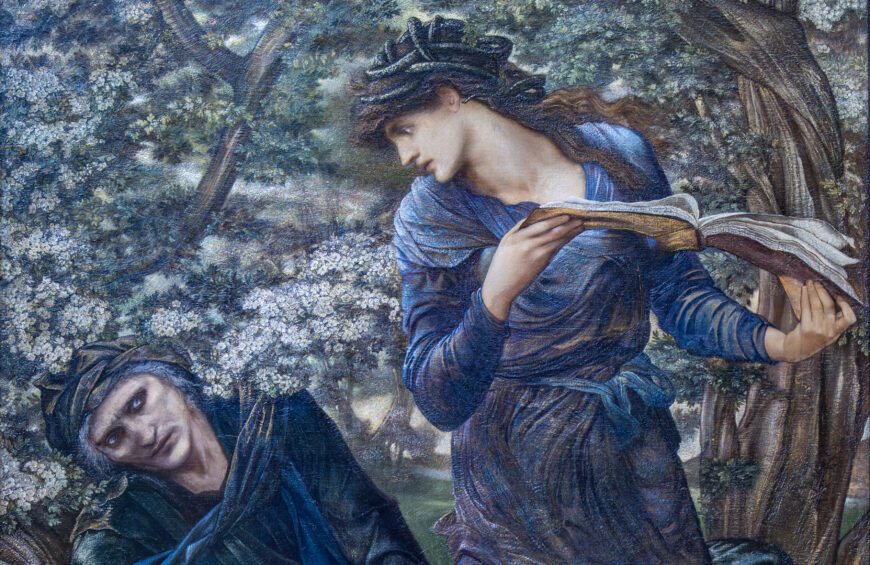A mythical tale of resurrection
One day long ago in the mythical past, a young boy named Glaukos went missing. His father, the legendary King Minos of Crete, sent everyone who worked for him out to look for his son. After a long search, a seer named Polyeidos found Glaukos drowned in a vat of honey. King Minos was understandably distraught at the death of his son. He decided to enclose the seer Polyeidos in the tomb with his dead son Glaukos, and vowed that Polyeidos could only come out if he brought Glaukos back to life.
Polyeidos didn’t know how to resurrect the dead. He sat in the tomb for some time contemplating how he might bring Glaukos back to life. Eventually, a single snake slithered into the tomb. Polyeidos was disgusted by the snake and quickly killed it with his staff. Shortly thereafter, a second snake came into the tomb. Polyeidos was just about to kill the second snake when he realized it was approaching the first, dead snake with a plant in its mouth. He stopped and watched as the second snake fed the plant to the first snake, bringing it back to life. Polyeidos then used the same magical plant to resurrect Glaukos, who happily returned to his family.
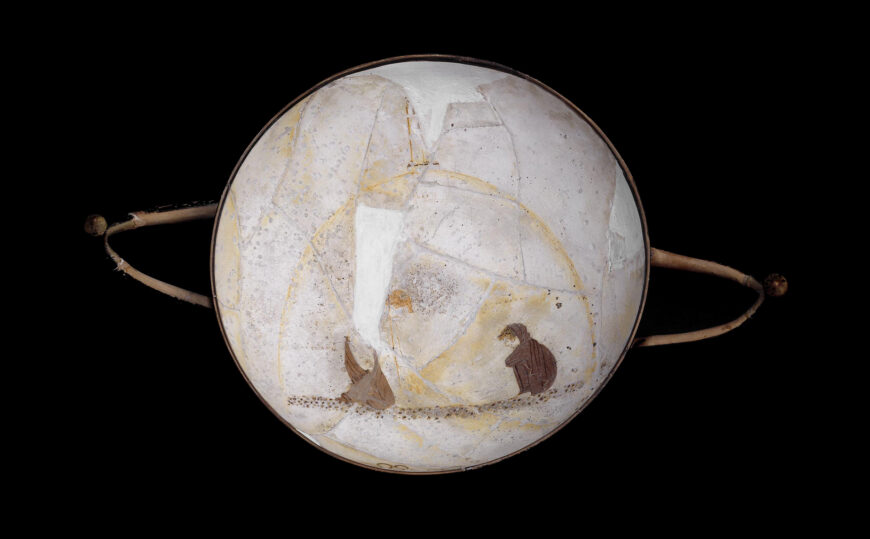
Sotades Painter, White-ground cup, c. 460 B.C.E., ceramic, 13.3 cm diameter (© The Trustees of the British Museum, London)
We know the details of this ancient myth because several authors wrote it down in antiquity. [1] Although it was relatively popular in drama and in literature, it appears on only one surviving ancient Greek artwork: a painted ceramic cup that was made in Athens around 460 B.C.E. [2] We can be sure that the inside of the cup is telling the story of Polyeidos and Glaukos because its figures are named in small painted labels. Glaukos is on the right, squatting on the ground, wrapped up in a purplish cloak. Polyeidos is on the left, kneeling and looking down towards the two snakes pictured below. Although Polyeidos has not yet taken the resurrecting plant from the second snake, Glaukos’s eyes are open, suggesting that the Sotades Painter is showing two successive moments of the story at once, perhaps to remind viewers of the happy ending Glaukos would soon enjoy. [3] Polyeidos and Glaukos are shown inside a large, dome-shaped tomb, the yellowish curving walls of which are visible on either side of them. A tripod, now partially missing because of damage to the cup, sits on top of the tomb, marking it out as a rich burial place. The scene is painted in a way that suggests we are looking through the walls of the tomb into its interior, where Polyeidos is about to discover how he can revive Glaukos.
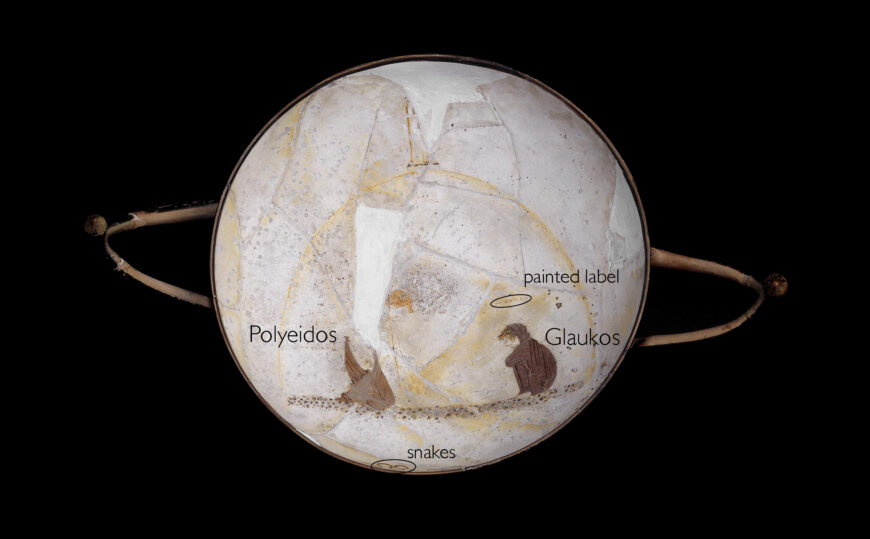
Sotades Painter, White-ground cup, c. 460 B.C.E., ceramic, 13.3 cm diameter (© The Trustees of the British Museum, London)
The artist who painted this cup is today known as the Sotades Painter. A potter named Sotades signed several cups that seem to have been painted by the same artist, including this one. Since the painter didn’t sign these cups, we don’t know his actual name. We call him the Sotades Painter because he often worked with the potter Sotades. In this cup, the Sotades Painter used a series of special techniques to illustrate a compelling narrative of death and rebirth. We will first look more closely at these techniques before considering the original function of the vessel in order to understand why this unusual story was painted on it.
The Sotades Painter’s special techniques
The Sotades Painter decorated the entire interior of this cup with the story of Polyeidos and Glaukos. The narrative is painted on a white background. This style of ancient Greek vase painting, in which painted figures appear on a white background, is known as the white-ground technique. The technique became popular around 470 B.C.E., when Athenian vase painters began to use it to decorate their vessels with some frequency. [4]

Sotades Painter, fragment of a red-figure cup, c. 460 B.C.E., ceramic, 11.4 cm diameter (Musée du Louvre, Paris)
At that time, Athenian craftspeople most often used the red-figure technique to paint their vases. Vase painters using the red-figure technique painted the backgrounds of their vessels (e.g., the space between the figures) with a kind of liquid clay that we call slip, which looks like black paint once the vase is fired in a kiln. Red-figure vase painters also added details to their figures in watered down slip known as dilute glaze. On red-figure vases, figures thus appear reddish in color—the same color as the clay of the vessel itself—with some details added in dilute glaze. We can see these elements in a small fragment of a drinking cup made by the Sotades Painter in the red-figure technique. The woman and the horse she is riding are mostly red, while the background is black. Certain details of each figure, including the muscles in their necks, their hair, and the patterns on the woman’s clothes are added with black slip. Further details in the woman’s clothing are rendered in dilute glaze.
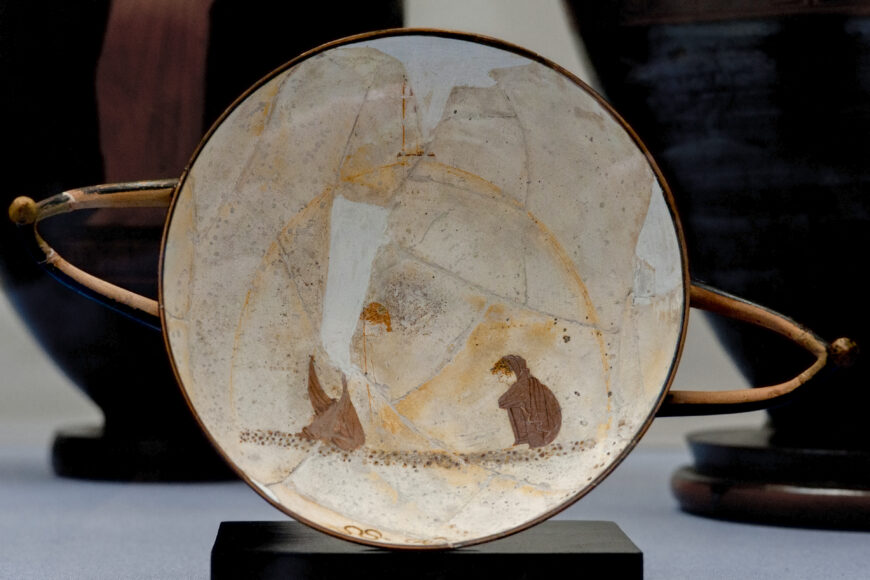
Sotades Painter, White-ground cup, c. 460 B.C.E., ceramic, 13.3 cm diameter (British Museum, London; photo: Egisto Sani, CC BY-NC-SA 2.0)
When we compare the white-ground technique to the red-figure technique, the advantages of the white-ground technique become clear. Vase painters who employed the white-ground technique were able to use more varied colors and glazes in their compositions. However, there was a major disadvantage to the white-ground technique: the pigments used in the white background and in the figures that decorate it are far more fragile than those used in the durable red-figure technique. Vases decorated with the white-ground technique were too delicate to use in everyday life. As a result, white-ground vessels were almost exclusively used as grave offerings. [5] They were not used by living people, but were instead buried with the dead as gifts that might serve them in the afterlife. The Sotades Painter’s cup decorated with Polyeidos and Glaukos is one of many white-ground vases that were enclosed in Athenian burials during the High Classical period.
Before we consider the original context of the Sotades Painter’s cup in more detail, we must look more closely at how the artist took advantage of the white-ground technique to create his elaborate narrative scene. The Sotades Painter used dilute glaze to paint the walls of the tomb inside the cup in an attempt to add pictorial depth to his image. The curving walls of the tomb are painted in a yellowish dilute glaze that fades into the white background, making them less distinct than both the tripod that sits atop the tomb and the figures within the tomb. The Sotades Painter is attempting to show the tomb as if the walls have been cut away to give a glimpse of what is happening within. [6]
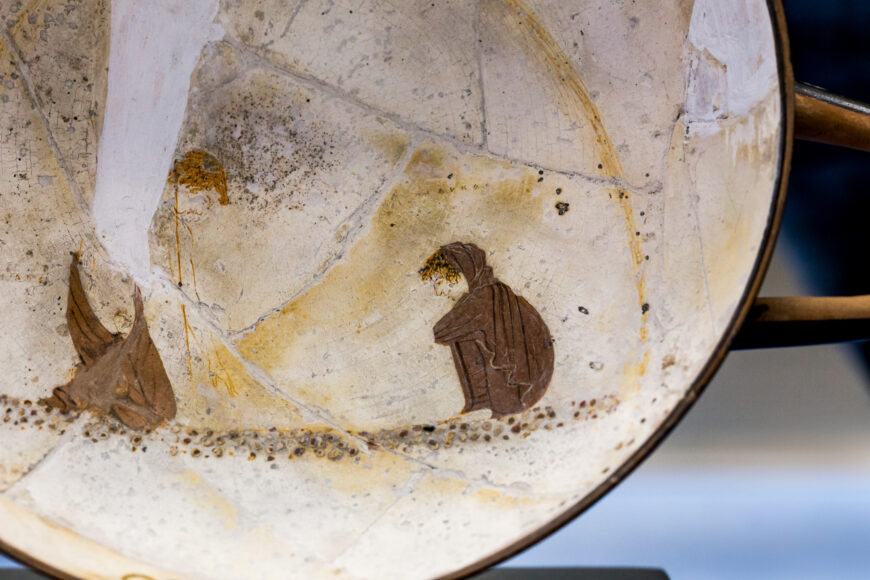
Polyeidos and Glaukos (detail), Sotades Painter, White-ground cup, c. 460 B.C.E., ceramic, 13.3 cm diameter (British Museum, London; photo: ArchaiOptix, CC BY-SA 4.0)
In order to add believable dimension and texture to the clothes worn by Polyeidos and Glaukos, the Sotades Painter used several shades of the same purplish color to render the garments. When we look more closely at Glaukos, we see that much of his cloak is painted with a single shade of purple. However, the folds in the garment—visible in the hood over the boy’s head, the fabric that hangs from his shoulder, and the sleeve that envelopes his arm—are painted in a darker shade of the same purple color, giving the fabric a more believable texture. The edge of the cloak is painted in a lighter, whitish color, adding more dimension. We see the same use of light and dark shades in Polyeidos’s cloak, which has fallen down beneath his waist as he kneels to look towards the snakes.
The Sotades Painter also used a special technique to depict the ground within the tomb atop which Polyeidos kneels and Glaukos squats. To make the dirt floor, the Sotades Painter added bits of colored clay to the otherwise smooth surface of the vessel, giving it actual texture. [7] If you were to run your figure over the inside of this delicate cup, you would find the ground is bumpy. The floor of the tomb painted in the cup thus resembles a pebbled ground both visually and physically.

Sotades Painter, White-ground cup, c. 460 B.C.E., ceramic, 13.3 cm diameter (© The Trustees of the British Museum, London)
Having considered how the Sotades Painter used special techniques to render a scene happening inside a tomb, we can now return to the cup overall to try to answer a final question about the story it is telling. Where exactly are the snakes supposed to be? They are just barely visible at the lower edge of the cup, far beneath the pebbled ground inside the tomb. To understand how the snakes relate to the figures spatially, we have to remember that this image is not painted on a flat surface, but is instead rendered on the curving interior of a cup. The snakes are close to the outer edge of the cup. If you were to hold the cup by its handles in front of you, the snakes would be closer to you than the figures within the tomb, because they are on the raised edge. This positioning of the snakes involves the viewer more directly in the narrative depicted within the cup. Like Polyeidos, we have to look down to properly see the second snake slithering towards its dead companion. [8] It is almost as if the Sotades Painter has situated us within the tomb alongside Polyeidos and Glaukos, forcing us to participate in the scene by extending its space towards us.
Hoping for rebirth in ancient Athens
Now that we understand the scene in the cup and the techniques the Sotades Painter used to create it, we can turn our attention to its original context, which will help us understand why the artist decided to paint this unusual narrative in the first place. Although this cup was not found by archaeologists in controlled excavations, scholars have been able to discover much about its original context by studying records kept by the antiquities dealer who sold it in the late 1800s. The cup was one of nine vases that were discovered together in the tomb of a wealthy woman who was buried in Athens sometime in the mid-5th century B.C.E. [9] All of the vases seem to have been made in the workshop of the potter Sotades, and at least four of them—including this cup—were decorated by the Sotades Painter. [10] Because so many vases in this tomb were made by Sotades, scholars today call it the Sotades Tomb.
The other white-ground cups found in the Sotades Tomb also have unusual stories painted on them. Because of this and their fragility as white-ground vessels, some scholars believe the vases must have been made as a commission, created specifically to be interred with the woman buried in the Sotades Tomb. [11] The story of Polyeidos and Glaukos is particularly well suited to decorate a vase used as a grave offering. It is a hopeful tale that suggests the possibility of triumphing over death. A relative of the woman buried in the Sotades Tomb might have found this story particularly meaningful as he or she mourned the death of their loved one. Using special techniques, the Sotades Painter created a moving depiction of a myth that would be especially significant to anyone hoping to see their deceased loved one again.


